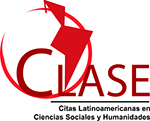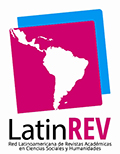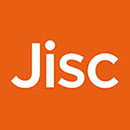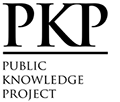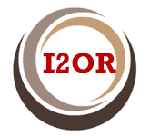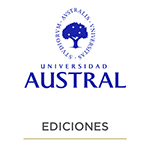Brand Restrictions: Controversies Regarding Food Labeling Proposals in Colombia
Abstract
Over the last decade, different proposals have emerged in Colombia and around the world regarding food labeling conditions. The purpose of these measures has been focused on preventing non- communicable diseases (NCD), by providing clearer nutritional information to consumers regarding the food they consume on their diet. For this purpose, many proposals include the imposition of warning stamps on the label of food products that are “high in” sodium, sugar, or saturated fat, as well as other limitations on the use and marketing of the brands that identify their products.
Therefore, this document aims to analyze the relevance and proportionality of the proposals in relation to the desired purposes, particularly with regard to the legitimate rights of trademark owners and consumers. In the conclusion, it will be determined that the interest in promoting regulations to reduce diseases related to poor eating habits, without an adequate evaluation of the environment in which these measures are intended to be applied, can: (i) generate undesirable and contradictory consequences with the ultimate goal of reducing diseases; (ii) impair other individual rights; and, (iii) act unjustifiably to the detriment of the industrial property rights of the trademark owners.
Downloads
References
Andrews, J. C., Burton, S. y Kees, J. (2011) Is simpler always better? Consumer evaluations of front of-package nutrition symbols. Journal of Public Policy & Marketing, (30), pp. 175-190. https://epublications.marquette.edu/cgi/viewcontent.cgi?article=1144&context=market_fac.
Arbouin-Gómez, F. Contreras-Jaramillo, J. C. y Uribe-Piedrahita, C. A. (2019). La aplicación de la función social de la propiedad intelectual a través del abuso del derecho: un análisis necesario para el sistema de derecho civil. Revista Vniversitas, (139), pp. 4-9. https://revistas.javeriana.edu.co/index.php/vnijuri/article/view/27248.
Asociación Interamericana de Propiedad Intelectual. (2019). Comentarios al anteproyecto de Norma Oficial Mexicana NOM-051 referente a condiciones de etiquetado a productos preenvasados. Comité de Competencia.
Australian Government Department of Health. (2018). Smoking prevalence rates. https://www1.health.gov.au/internet/publications/publishing.nsf/Content/tobacco-control-toc~smoking-rates.
Benavides, J. (2018). Restricción al Derecho de Uso de las Marcas en el Marco del Convenio de París y los Acuerdos ADPIC. (Tesis de Maestría en Derecho Empresarial). Pontificia Universidad Javeriana, Santiago de Cali. http://vitela.javerianacali.edu.co/bitstream/handle/11522/10434/Restriccion_derecho_uso.pdf?sequence=1&isAllowed=y.
Cifuentes Castro, A. F. (2015). Plain Packaging: Controversias alrededor de las restricciones al uso de marcas registradas vinculadas a los productos del tabaco. Revista de Derecho Privado, (53), pp. 4-25. https://derechoprivado.uniandes.edu.co/components/com_revista/archivos/derechoprivado/pri558.pdf.
Freeman, B., Chapman, S. y Rimmer, M. (2008). The case for the plain packaging of tobacco products. Addiction, (103), pp. 580-590. https://doi.org/10.1111/j.1360-0443.2008.02145.x.
Federación Nacional de Comerciantes. (2019). Ley de etiquetado descalifica productos alimenticios y no informa responsablemente al consumidor. http://www.fenalco.com.co/bienvenidos/ley-de-etiquetado-descalifica-productos-alimenticios-y-no-informa-responsablemente-al.
Greenhalgh, E. M., Bayly, M. y Winstanley, M. H. (2019). Prevalence of smoking-adults. Tobacco in Australia: Facts and issues. Melbourne: Cancer Council Victoria. http://www.tobaccoinaustralia.org.au/chapter-1-prevalence/1-3-prevalence-of-smoking-adults.
Hamilton, M. (2000). The High Cost of Look-Good, Feel-Good Legislation. CNN.com. http://edition.cnn.com/2000/LAW/07/columns/fl.hamilton.ada.07.26/.
Iglesias, C. (2010). Marcas. Su función social. Instituto de la Propiedad Intelectual de Buenos Aires. http://ipiba.org/marcas-su-funcion-social/.
International Trademark Association. (2015). Brief of Amicus Curiae. Australia - Measures concerning trademarks and other plain packaging requirements applicable to tobacco products and packaging. Nueva Delhi. https://www.inta.org/wp-content/uploads/public-files/advocacy/amicus-briefs/INTAWTOPlainPackagingAmicusBriefApril2015.pdf.
Instituto Nacional de Salud. (2019). Estudio realizado el Grupo de Nutrición del INS encontró los principales factores que utilizan los colombianos para comprar alimentos. Bogotá. https://www.ins.gov.co/Noticias/Paginas/Estudio-realizado-por-el-Grupo-de-Nutrici%C3%B3n-del-INS-encontr%C3%B3-los-principales-factores-que-utilizan-los-colombianos-para-com.aspx.
KPMG. (2016). Illicit tobbaco in Australia. 2015 Full year report. Londres. https://home.kpmg/content/dam/kpmg/pdf/2016/04/australia-illict-tobacco-2015.pdf.
Lizarazu Montoya, R. (2014). Manual de propiedad industrial. Bogotá: Legis.
McCann World Group. (2012). Truth About Street: Latin America & The Caribbean. https://www.lbbonline.com/news/mccann-worldgroup-unveils-truth-about-street.
Ministerio de Salud. (2017). Informe de evaluación de la implementación de la ley sobre composición nutricional de los alimentos y su publicidad. https://www.minsal.cl/wp-content/uploads/2018/05/Informe-Implementaci%C3%B3n-Ley-20606-febrero-18-1.pdf.
Ministerio de Salud. (2018). Informe de evaluación de la implementación de la ley sobre composición nutricional de los alimentos y su publicidad. https://elpoderdelconsumidor.org/wp-content/uploads/2019/12/d-etiquetado-chile-estudio-ley-d-alimentos-2019-07.pdf.
Ministerio de Salud y Protección Social. (2020). Colombia tendrá etiquetado nutricional en los alimentos envasados. https://www.minsalud.gov.co/Paginas/Colombia-tendra-etiquetado-nutricional-en-los-alimentos-envasados.aspx.
Montes, C. (2019) El etiquetado debe ser una herramienta de información y no de alarma. Revista IALIMENTOS. https://www.revistaialimentos.com/ediciones/ed-82-bio-koko-con-cristales-a-la-conquista-de-latinoamerica/el-etiquetado-debe-ser-una-herramienta-de-informacion-y-no-de-alarma-andi/.
Mora, M., Gómez, L., Jalabe, W., Smith, L. y Popkin, B. (2019). ¿Por qué es prioritario implementar un adecuado etiquetado frontal en productos comestibles en Colombia? Convenio Nº 5103721 Pontificia Universidad Javeriana, Universidad de Carolina del Norte. https://medicina.javeriana.edu.co/documents/3185897/0/Etiquetado.pdf/8a8bc91d-413a-4eb6-881d-fc1fcf2a17a3.
Organización Mundial de la Salud. (2020). Obesidad y sobrepeso. https://www.who.int/es/news-room/fact-sheets/detail/obesity-and-overweight.
Organización de las Naciones Unidas para la Agricultura y la Alimentación. (2010). El sector informal alimentario en las ciudades de Medellín, Manizales y Soacha en Colombia. http://www.fao.org/3/a-as342s.pdf.
Organización de las Naciones Unidas para la Agricultura y la Alimentación, Organización Panamericana de la Salud, Programa Mundial de Alimentos y UNICEF. (2018). Panorama de la seguridad alimentaria y nutricional en América Latina y el Caribe 2018. Santiago. http://www.fao.org/3/CA2127ES/ca2127es.pdf.
Peñaherrera, V., Carpio, C., Sandoval, L., Sánchez, M., Cabrera, T., Guerrero, P. y Borja, I. (2018). Efecto del etiquetado semáforo en el contenido nutricional y el consumo de bebidas gaseosas en Ecuador. Revista Panamericana de Salud Pública, (48). https://doi.org/10.26633/RPSP.2018.177.
Revista Semana. (21 de junio de 2019). “La ley de comida chatarra no ha muerto”: Red PaPaz. https://www.semana.com/educacion/articulo/proyecto-que-restringia-la-comida-chatarra-a-ninos--se-hundio-en-el-congreso/620400/.
Smith Taillie, L., Reyes, M., Colchero, M. A., Popkin, B. y Corvalán, C. (2020). An evaluation of Chile’s Law of Food Labeling and Advertising on sugar-sweetened beverage purchases from 2015 to 2017: A before-and-after study. PLOS Medicine, (2). https://journals.plos.org/plosmedicine/article?id=10.1371/journal.pmed.1003015.
The Food and Drink Federation. (2009) The facts: science behind Guideline Daily Amounts. http://www.fdf.org.uk/publicgeneral/gdas_science_Jul09.pdf.
Universidad de Chile. (2019). Cambio en la composición de productos y en los hábitos de compra: los efectos de la Ley de Etiquetado. https://www.uchile.cl/noticias/154960/cambio-en-la-composicion-de-productos-y-en-los-habitos-de-compra.
Wakefield, M., Coomber, K., Zacher, M., Durkin, S., Brennan, E. y Scollo, M. (2014). Australian adult smokers’ responses to plain packaging with larger graphic health warnings 1 year after implementation: results from a national cross-sectional tracking survey. Tobacco Control, (24). https://tobaccocontrol.bmj.com/content/tobaccocontrol/24/Suppl_2/ii17.full.pdf.
White, V., Williams, T. y Wakefield, M. (2015). Has the introduction of plain packaging with larger graphic health warnings changed adolescents’ perceptions of cigarette packs and brands? Tobacco Control, (24). https://www.ncbi.nlm.nih.gov/pmc/articles/PMC4401345/.
Copyright (c) 2020 Juan Guillermo Moure Pérez, Camilo Andrade Martínez, Juan Carlos Camacho Páramo

This work is licensed under a Creative Commons Attribution-NonCommercial-NoDerivatives 4.0 International License.
This license allows the copy, distribution, exhibition and representation of the work provided authorship is acknowledged and the work is properly quoted. Commercial use of the original work or the generation of derived works are not allowed.
The authors hereby guarantee the right to the first publication of the work to the Revista Iberoamericana de la Propiedad Intelectual.









